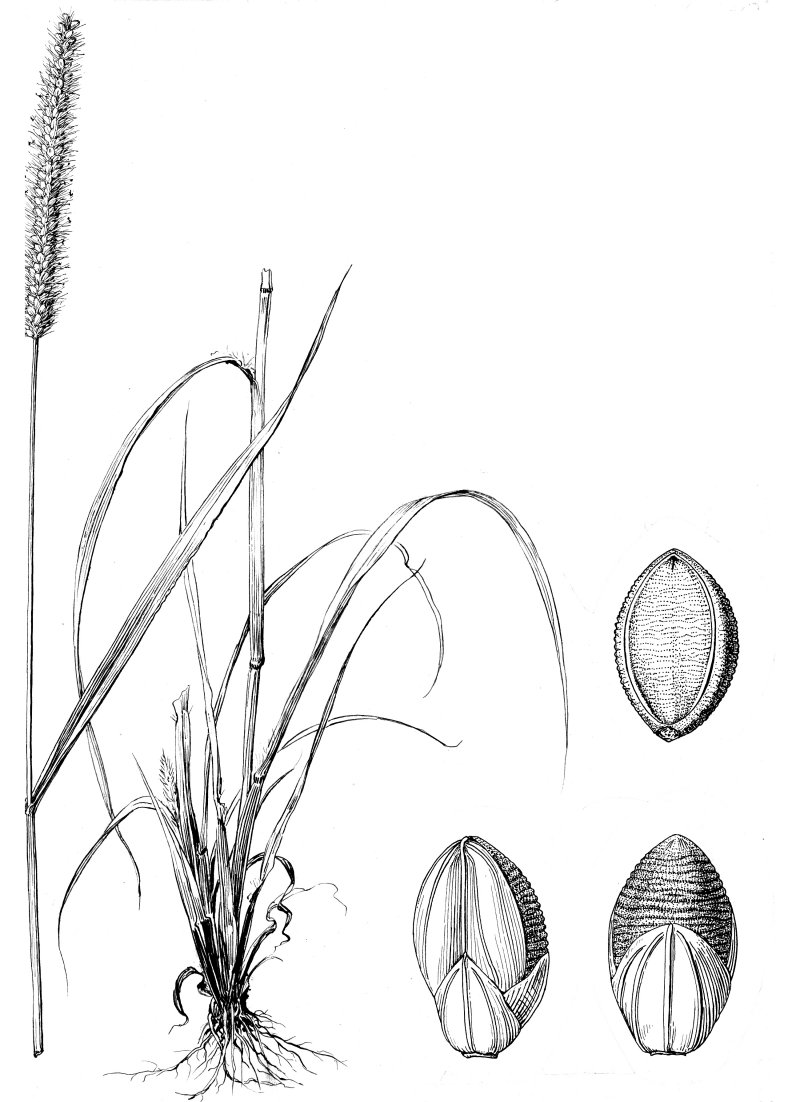
Setaria glauca (L.) Beauv. Yellow Bristlegrass Habit: Erect or ascending, glaucous annual. Culms: Erect to prostrate, 30-120 cm. tall, branching at the base, glabrous, flattened, often with a purple tinge. Blades: 5-15 cm. long or more, 4-10 mm. wide, twisted in a loose spiral, glabrous or with scattered long hairs at the base. Sheaths: Shorter than the internodes, keeled. Ligule: Membranous, ciliate, about 1 mm. long. Inflorescence: Dense terminal evenly cylindric spikelike panicles, yellow at maturity, mostly 5-10 cm. long, about 1 cm. thick, the axis densely pubescent, bearing spikelets subtended by one to several bristles (sterile branchlets). Spikelets: Broadly ovate, awnless, 3 mm. long, flat on one side and strongly convex on the other, in a cluster of several sterile upwardly barbed bristle-like persistent branches, the longer 2-3 times as long as the spikelet. Glumes: First broad, about half as long as the spikelet, 3-5-nerved, the second about two thirds as long as the spikelet, ovate, acute, 5-9-nerved, sterile lemma about as long as the fruit, 5-nerved, the lower edges folded around the fruit, with well-developed palea but without stamens. Fertile lemmas: Broadly ovate, transversely rugose, indurated, obtuse, enclosing a shorter palea. Fruit: Strongly marked with numerous transverse ridges. Habitat: Waste places and cultivatd ground, roadsides. June-September. Kansas Range: Throughout. Use: Common weed, but palatable to livestock. Synonyms: Setaria pumila (Poir.) Roemer & J.A. Schultes Setaria pumila (Poir.) Roemer & J.A. Schultes ssp. pallidifusca (Schumacher) B.K. Simon Setaria glauca sensu Vickery Setaria glauca (L.) Beauv. var. pallidifusca (Schumacher) T. Koyama Setaria pallidifusca (Schumacher) Stapf & C.E. Hubbard